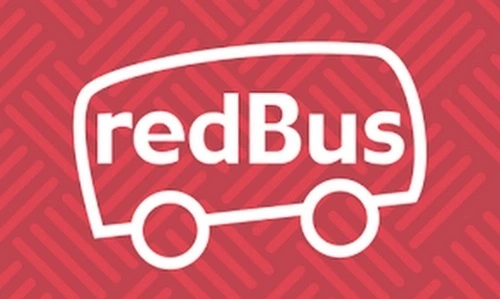RedBus, founded in 2006 by Phanindra Sama, Sudhakar Pasupunuri, and Charan Padmaraju, is India’s largest online bus ticketing platform. It revolutionized the bus travel industry by digitizing ticket bookings and simplifying access to intercity and intracity bus services. With operations spanning across India, Southeast Asia, and Latin America, RedBus has become a trusted brand for millions of travelers. This article delves into RedBus’ business model and explores how the platform earns money.
Overview of RedBus’ Business Model

RedBus operates on a B2C (Business-to-Consumer) and B2B2C (Business-to-Business-to-Consumer) model, functioning as a digital intermediary between bus operators and passengers. The key elements of RedBus’ business model include:
- Aggregator Platform: RedBus connects passengers with bus operators, offering a centralized platform for ticket booking.
- Inventory Management: Partnering with bus operators, RedBus provides real-time availability of seats.
- Value-Added Services: Enhancing the travel experience with services like live bus tracking, insurance, and loyalty programs.
- Global Expansion: Operating in international markets such as Indonesia, Malaysia, Singapore, and Peru.
By solving inefficiencies in the traditional bus ticketing system, RedBus provides convenience for travelers while helping bus operators increase occupancy rates.
Revenue Streams
RedBus generates revenue through a variety of channels:
a) Commission from Bus Operators
The primary revenue source for RedBus is the commission it earns from bus operators for each ticket sold through its platform. This commission typically ranges between 10% and 15% of the ticket price.
How it works:
- Bus operators list their inventory on RedBus.
- For every successful booking, RedBus retains a commission as per the agreement.
This model benefits both parties: bus operators gain increased visibility and sales, while RedBus earns a percentage of the transaction.
b) Service Fees from Customers
RedBus charges customers a small service or convenience fee for bookings made on its platform. This fee is typically a nominal percentage of the ticket price or a fixed amount per booking.
Revenue Source:
- The service fee is added to the ticket price during checkout.
- It contributes directly to RedBus’ revenue while covering operational costs.
c) Advertising and Promotions
RedBus offers advertising space on its website and app for bus operators, travel agencies, and other businesses. Promotional opportunities include:
- Featured Listings: Bus operators pay to highlight their services prominently on the platform.
- Banner Ads: Companies pay to display ads targeting RedBus users.
Revenue Source:
- Advertisement fees based on impressions or clicks.
- Premium placement for higher visibility.
d) Value-Added Services
RedBus earns additional revenue by providing value-added services to travelers, such as:
- Travel Insurance: RedBus offers insurance options during the booking process, earning a commission from insurance providers.
- Live Bus Tracking: While free for customers, some operators pay RedBus for the integration of GPS tracking systems.
- RedBus Prime: A premium service offering guaranteed amenities, such as punctuality and cleanliness.
e) Corporate Bookings
RedBus caters to businesses through its B2B corporate solutions, providing bulk ticketing and travel management services for companies.
Revenue Source:
- Subscription fees for corporate accounts.
- Commissions on bulk bookings.
f) RedBus Partner Program
Through its agent platform, RedBus enables travel agents to book tickets for customers. Agents earn a small commission while RedBus takes a share of the transaction fee.
g) International Operations
RedBus generates significant revenue from its global markets, such as Indonesia, Malaysia, and Latin America. By localizing its offerings and partnering with regional bus operators, it earns commissions and service fees similar to its Indian operations.
Cost Structure
Operating an online ticketing platform like RedBus involves various costs:
a) Technology and Platform Maintenance
RedBus invests heavily in:
- Developing and maintaining its website and mobile app.
- Implementing AI and machine learning for personalized recommendations and real-time seat availability.
- Ensuring data security and transaction reliability.
b) Marketing and Customer Acquisition
To attract users, RedBus spends significantly on:
- Digital advertising (Google Ads, social media).
- Referral programs and cashback offers.
- Promotions targeting Tier 2 and Tier 3 cities.
c) Customer Support
Maintaining a robust customer support system for booking assistance, refunds, and complaints is an ongoing expense.
d) Partnerships and Vendor Management
Building and managing relationships with bus operators, agents, and travel agencies requires a dedicated sales and operations team.
e) Expansion Costs
Entering new international markets involves expenses related to localization, market research, and regional partnerships.
Unique Features Driving Revenue Growth
RedBus has several innovative features and strategies that set it apart:
a) Real-Time Seat Availability
By integrating directly with bus operators, RedBus offers real-time seat inventory, ensuring accurate bookings and reduced cancellations.
b) Wide Network
RedBus has partnerships with over 3,500 bus operators, offering services across 70,000 routes in India and globally, making it the largest bus aggregator in the market.
c) Multi-Language Support
The platform supports multiple Indian languages, catering to users from diverse regions.
d) Mobile-First Approach
A significant portion of bookings is made via the RedBus mobile app, ensuring a seamless and user-friendly experience for smartphone users.
e) Customer Loyalty Programs
RedBus incentivizes repeat bookings through loyalty programs and discounts, increasing customer retention.
Challenges and Opportunities
Challenges
- High Competition: Competitors like MakeMyTrip, AbhiBus, and state-run transport platforms pose a challenge.
- Seasonal Demand: Revenue is often impacted by seasonal variations in travel demand.
- Operational Dependence: The platform’s success relies on the reliability and quality of partner bus operators.
- Low Margins: The commission model operates on thin margins, requiring high volumes for profitability.
Opportunities
- Rising Digital Adoption: Increased smartphone penetration and digital payments offer vast growth potential in Tier 2 and Tier 3 cities.
- Global Expansion: Entering untapped markets in Africa, the Middle East, and Southeast Asia.
- Diversified Services: Expanding into rail, ferry, and flight ticketing could create additional revenue streams.
- Sustainability Initiatives: Partnering with electric bus operators aligns with the global focus on sustainable travel.
Financial Overview
RedBus has witnessed significant growth, particularly in regions where traditional ticketing systems dominate. By leveraging its scalable model and expanding globally, the company has strengthened its revenue base. With increased adoption of digital travel solutions, RedBus is well-positioned for sustained growth.
Conclusion
RedBus’ business model exemplifies how technology can transform traditional industries by improving accessibility, transparency, and efficiency. Through its diverse revenue streams, global presence, and customer-focused innovations, RedBus has established itself as the market leader in online bus ticketing. As it continues to expand into new markets and services, RedBus is poised to play a key role in the future of digital travel and transportation.

